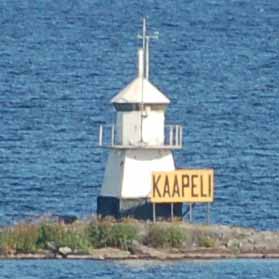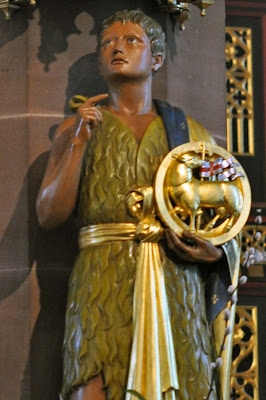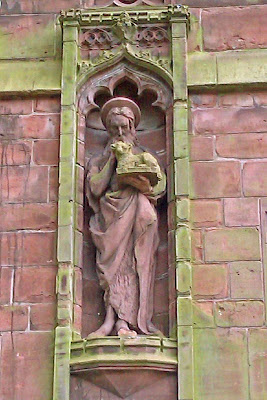Over the last few years, it has become my habit to go home in the autumn.
It is a quick trip. In the spring and summer, if I am in London and have time to spare, I often head out into the Surrey Hills or the High Weald, Areas of Outstanding Natural Beauty, both excellent walking country. I pass on that in the autumn, as it is not the weather for it, and it is usually a Saturday in the football season, so I want to get back to London for the match.
When I was growing up, Dormansland, and east Surrey generally, was a fairly quiet backwater. Although it was in easy reach of London, and many people commuted, it was not stockbroker belt like the rest of the county, a spot for those in the know. Whilst I do not live or have family there any more, I get the impression that a lot of that has gone. There is one reason - frequent electric trains, making for a more attractive commute. They had been talking about electrifying the line from Croydon to East Grinstead since 1938, and it finally happened in 1987.
Not that it has made much change to the journey, past the Downs with the trees still changing colour, a few weeks later than back in the north, the long downhill run to the Eden, not quite such a bouncy ride as the old trains, then climbing again towards East Grinstead, more quietly than the Diesels.
It was a dull grey day this year, so when I got my camera out (my little Wildfire phone on this occasion), I knew I would not be getting anything like the picture above. The trees still gave a splash of colour in our wood that used to be a field.
When my mother died 13 years ago, I buried her with her mother, who died at the tail end of the first post War polio epidemic in 1947. With my grandfather not being around - my best guess is he headed back home with the Canadian Army, well there was a war on - my mother was brought up by her grandparents, who had been born in the 1880s, which may explain why I can be a bit Victorian.
The main purpose of the trip is to perform some routine maintenance on my mother's memorial. When I arrived, the firm who maintain the churchyard were finishing their work, and everything looked neat and tidy. When I was growing up, Ernie Walls, a lifelong resident of the village, worked on the churchyard into his seventies and eighties. When you look closely, you can see the difference between work done by a committed volunteer and a professional team. The people who maintain the grounds do their job well, the paths and grass are always immaculate. I am not sure if Mr Walls was paid for his work, but he went well beyond any hours for which he may have been remunerated, and the difference shows in the individual plots.
My great great uncle Alfred is keeping his memorial above the rising ground, my mother is easily made visible again by clearing the leaves and a good stout pull at the encroaching grass, but my grandmother is lost to record - there is a now buried kerb on the left to match that you can still see on the right. Even the Gravestone Photographic Resource, a voluntary effort to record information in churchyards and cemeteries before they disappear to overgrowth, erosion and, sadly, in some cases vandalism, came too late to record her details.
Mr Walls was looking after his friends, relatives and people he had known in his long life in the village. When I was growing up, there were a dozen people I could think of who shared his knowledge, all now gone or frail, and with modern mobility, no lifelong residents to replace them. With them goes the motivation to sweep the leaves, trim the grass and edge the kerbs of the individual plots, a task that takes more time than could realistically be paid for.
After my maintenance, there is time to walk around to pay my respects to those I knew myself, those I knew by name, those who played their part over the years in the life of the village, and some who played their part in our national life - a Member of Parliament, an England rugby union player, a Dean of Arches, and two who signed up to serve their country in the First World War, but died in accidents before they left these shores.
On these trips I often have time to round off with a quick trip to the Plough - a constant beer range, with the Harveys Sussex Best always well kept - before heading back to London.
There was no time for that this time, as the football was out of London, in Burgess Hill, so I had to leave only just after they opened, one less roadside hostelry to be visited from here to there.
 |
| St John the Evangelist Dormansland, Autumn 2005 |
When I was growing up, Dormansland, and east Surrey generally, was a fairly quiet backwater. Although it was in easy reach of London, and many people commuted, it was not stockbroker belt like the rest of the county, a spot for those in the know. Whilst I do not live or have family there any more, I get the impression that a lot of that has gone. There is one reason - frequent electric trains, making for a more attractive commute. They had been talking about electrifying the line from Croydon to East Grinstead since 1938, and it finally happened in 1987.
Not that it has made much change to the journey, past the Downs with the trees still changing colour, a few weeks later than back in the north, the long downhill run to the Eden, not quite such a bouncy ride as the old trains, then climbing again towards East Grinstead, more quietly than the Diesels.
It was a dull grey day this year, so when I got my camera out (my little Wildfire phone on this occasion), I knew I would not be getting anything like the picture above. The trees still gave a splash of colour in our wood that used to be a field.
When my mother died 13 years ago, I buried her with her mother, who died at the tail end of the first post War polio epidemic in 1947. With my grandfather not being around - my best guess is he headed back home with the Canadian Army, well there was a war on - my mother was brought up by her grandparents, who had been born in the 1880s, which may explain why I can be a bit Victorian.
The main purpose of the trip is to perform some routine maintenance on my mother's memorial. When I arrived, the firm who maintain the churchyard were finishing their work, and everything looked neat and tidy. When I was growing up, Ernie Walls, a lifelong resident of the village, worked on the churchyard into his seventies and eighties. When you look closely, you can see the difference between work done by a committed volunteer and a professional team. The people who maintain the grounds do their job well, the paths and grass are always immaculate. I am not sure if Mr Walls was paid for his work, but he went well beyond any hours for which he may have been remunerated, and the difference shows in the individual plots.
 |
| My mother, grandmother and great great uncle |
Mr Walls was looking after his friends, relatives and people he had known in his long life in the village. When I was growing up, there were a dozen people I could think of who shared his knowledge, all now gone or frail, and with modern mobility, no lifelong residents to replace them. With them goes the motivation to sweep the leaves, trim the grass and edge the kerbs of the individual plots, a task that takes more time than could realistically be paid for.
After my maintenance, there is time to walk around to pay my respects to those I knew myself, those I knew by name, those who played their part over the years in the life of the village, and some who played their part in our national life - a Member of Parliament, an England rugby union player, a Dean of Arches, and two who signed up to serve their country in the First World War, but died in accidents before they left these shores.
On these trips I often have time to round off with a quick trip to the Plough - a constant beer range, with the Harveys Sussex Best always well kept - before heading back to London.









